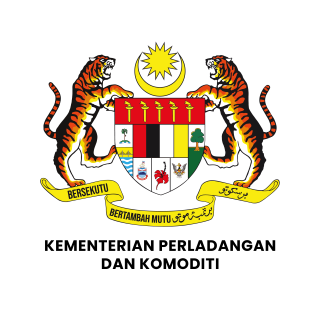MEDIA RELEASE
MPIC TO MONITOR INDONESIA’S LATEST DEVELOPMENTS; CONFIDENT CPO
DEMAND REMAINS ROBUST
The fact that palm oil stockpile increased for the first time since October 2021 by 11.5% month-on-month (mom) to 1.64 million tonnes in April 2022 driven by higher output (+3.6% to 1.46 million tonnes) and weaker exports (-17.7% to 1.06 million tonnes) should not be a cause for concern.
This is because palm oil stockpile will likely dip in May 2022 on the back of seasonally lower crude palm oil (CPO) production (arising from the Ramadhan month) and stronger exports (following the Indonesian Government’s recent move to widen its export ban on raw materials for cooking oil).
However, Indonesia announced yesterday (May 19) that it has decided to lift its palm oil export ban from May 23 (Monday) following improvements in the domestic cooking oil supply situation and as Jakarta considers the welfare of 17 million workers in the palm oil industry.
Meanwhile, exports were dragged by lower exports to China (-50.8%), European Union (EU) (-23.2%) and Pakistan (-90.3%) due to several factors including (i) strict COVID-19 lockdowns which hampered palm oil shipments to China, and (ii) demand destruction as a result of high prices.
Nevertheless, preliminary data from AmSpec Agriculture Malaysia indicated that palm oil shipments alone have surged by 40.32% during the first 10 days of May on account of Indonesia’s absence from the global export market, a weak ringgit and widening palm discounts to bean oil.
CPO PRICE SPIKE
Recall that CPO prices surged past the RM7,000/tonne mark to hit its period peak of RM7,516/tonne following news that Indonesia had banned palm oil exports from April 28. The ban would only be lifted if the bulk cooking oil price comes down to 14,000 rupiah/litre across Indonesia (as of May 6, the average local price of cooking oil has dropped to 17,200 rupiah/litre from around 26,000 rupiah/litre).
Given Indonesia's reliance on palm oil exports and how a prolonged ban could seriously damage Indonesia's economy, the country as expected, has rescinded the decision to ban its palm oil exports. As it is, the MPIC wishes to put on record that it is in the midst of discussing with the Finance Ministry to look into the viability of slashing Malaysia’s export tax of palm oil to 4%-6% from the current 8% while at the same time to slow down the implementation of Malaysia’s biodiesel mandate to help meet the global demand amid an edible oil shortage.
This proposed temporary cut is pending a decision and We believe that Malaysian exporters are likely to be clear winners in the short term as global buyers will source for Malaysian palm oil.
Nevertheless, the MPIC urges industry players to focus closely on market variables that are capable to spark price volatility.
In the list of these variables are:
(i) the export policy of Indonesia
(ii) the recovery of palm oil production in Malaysia;
(iii) the adjustment of biodiesel policies in various countries;
(iv) progress of the Russia-Ukraine conflict; and
(v) the weather in both the US and South America.
STILL BULLISH PROSPECTS (FOR NOW)
On broader terms, the soft exports in April could be misleading as we believe international demand for edible oils which include palm oil is far from weak. April prices may be lower than March but remained at unprecedented levels. Year-to-date (YTD), CPO prices have averaged circa RM6,300/tonne which is significantly higher than the RM4,300/tonne average as projected by market analysts for 2022.
Looking ahead, CPO prices are likely to consolidate downward due to pending uptrend in monthly fresh fruit bunches (FFB) production rather than poor demand. Nevertheless, CPO prices should stay elevated due to the following factors:
•Tight supply: Supply of edible oils which are competing with palm oil is tight across the world. Henceforth, prices of vegetable oils such as soybean, rapeseed and sunflower oils are also strong. Together with seasonally stronger palm oil production in 2H 2022, edible oils and fats supply tightness should ease by 4Q 2022 but not by much. The prospect of a recovery is more likely in 2023; hence, palm oil prices may stay elevated till about mid-2023.
•Robust market: Despite some “demand destruction” due to very high prices, the overall market for palm oil is expected to remain robust. Indonesia’s challenge to meet domestic requirement indicate the strength of the international market for palm oil.
•Uptake from China: A key market for palm oil, China is poised to increase its palm oil demand later in the year as its economy is only gradually re-opening from the COVID-19 pandemic. Similarly, demand from the EU is likely to rise following the disruption to its traditional supply of sunflower and rapeseed oil from Ukraine and Russia.
•Oil price hike: The Russia-Ukraine conflict has also pushed up the prices of hydrocarbon fuels, creating a latent or “hidden” demand for biofuels if vegetable oil prices were to fall sufficiently.
The Ministry will continue to ensure that the palm oil industry, which is the country's main commodity, continues to contribute to national economic growth, thus benefiting all, especially smallholders and industry players.
The Ministry will continue to monitor the current situation involving Indonesia’s policy changes to ensure that the palm oil industry, which is the country's main commodity, continues to contribute to the country's economic growth, thus benefiting all, especially smallholders and industry players.
YB DATUK HAJAH ZURAIDA KAMARUDDIN
MINISTER OF PLANTATION INDUSTRIES AND COMMODITIES
20 MAY 2022







